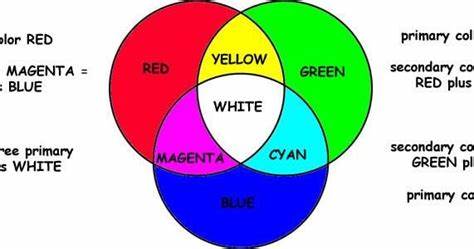Adding Color Makes The Sermon Memorable
Adding Color Makes The Sermon Memorable
We are in a series of posts on how to make your message memorable. Another strategy to this goal is that adding color makes the sermon memorable for the hearers.
 My wife and I watch a British comedy together occasionally called, As Time Goes By. In one episode the one of the major characters has written a book, and is working with a publisher to get it to market. The book, however, even by his own evaluation, is pretty boring. The publishing company owner tells him to “give it some color”. Unfortunately, all he can think of when describing a man in the story is, “he had a mustache”. Almost needless to say, the book doesn’t sell well.
My wife and I watch a British comedy together occasionally called, As Time Goes By. In one episode the one of the major characters has written a book, and is working with a publisher to get it to market. The book, however, even by his own evaluation, is pretty boring. The publishing company owner tells him to “give it some color”. Unfortunately, all he can think of when describing a man in the story is, “he had a mustache”. Almost needless to say, the book doesn’t sell well.
Adding color means “showing” people what you are talking about, not just “telling” them.
What Adding Color Means
So what does it mean to add color to your message? Brandon Hilgemann describes coming to this understanding that adding color makes the sermon memorable in his book, Preach and Deliver. He agreed to write an article, and was given an editor to work with. The one critique the editor had of his writing was, “Show, don’t tell.” Here’s how he describes his thoughts after getting this advice.
I was telling people about things, but I wasn’t showing it to them. For example, instead of writing, “The pastor was energetic.” I should have described the pastor bounding across the stage, waving his arms over his head.” (Preach and Deliver), p. 139)
Another example that Hilgemann gives is the well-known sermon by Jonathan Edwards in the 1700’s here in  there United States. The sermon was titled, “Sinners in the Hands of an Angry God.” Edwards is making the point to his listeners that our own righteous deeds can’t keep us from ending up in hell. In fact, they have no more power to keep us out of hell than “a spider’s web can stop a falling rock.” All of a sudden, we see truth in a different way as this picture invades our minds.
there United States. The sermon was titled, “Sinners in the Hands of an Angry God.” Edwards is making the point to his listeners that our own righteous deeds can’t keep us from ending up in hell. In fact, they have no more power to keep us out of hell than “a spider’s web can stop a falling rock.” All of a sudden, we see truth in a different way as this picture invades our minds.
Jesus Added Color To His Sermons
Once again, Jesus is the prime example of a preacher who added color to his messages. When you read the gospels, you find messages that are full of colorful additions. He didn’t just tell us truth, he showed it to us. Once again, Hilgemann summarizes for us:
- Jesus could have said, “Love everyone like they are your neighbor.” Instead, he told the story of the Good Samaritan.
- He could have said, “God wants to save all lost people.” Instead, he told the story of the lost sheep.
- Jesus could have said, “Not everyone will follow me.” Instead, he told the story of the sower. (p. 145)
Jesus understood that adding color makes the sermon memorable for the hearers.
Some Suggestions for Adding Color to Your Messages
Here are some suggestions for adding color to your messages
- Use object lessons. I heard a friend of mine preach about Jesus rescuing us. Somewhere he had gotten a
 rescue buoy on a rope. At one point in the message he pulled the buoy out from behind a chair and threw it out toward the audience. He repeated this action several times as he listed several ways that Jesus rescues us.
rescue buoy on a rope. At one point in the message he pulled the buoy out from behind a chair and threw it out toward the audience. He repeated this action several times as he listed several ways that Jesus rescues us. - Act out your stories. When you are talking about talking with someone, create the dialogue with the other person. Another friend had two chairs facing each other for a message where he was describing a conversation. When he was talking as himself, he sat in one of them. When he took the other chair, he was the other person. I heard that sermon more than twenty years ago, and yet it still rings in my memory.
- Add sensory details. What color was it? How did it smell? What was the sound like? When you touched it, what did it feel like?
- Think in metaphors. When you are making a point, what example creates the picture in the other person’s mind. Jonathan Edwards picture of a spider web trying to stop a rock is a good example.
Some Warnings About Adding Color to the Sermon
Just a couple of warnings about adding color.
- When you are telling a story about someone you know, make sure that you have gotten their permission. In today’s world, your sermon may get on the internet. Assume that the other person will hear it, so check with them.
- Check your facts. There is a lot of inaccurate information out there on the internet. Do a google search to check it out before you tell a story.
The bottom line is this: Adding color makes the sermon memorable for your hearers.



